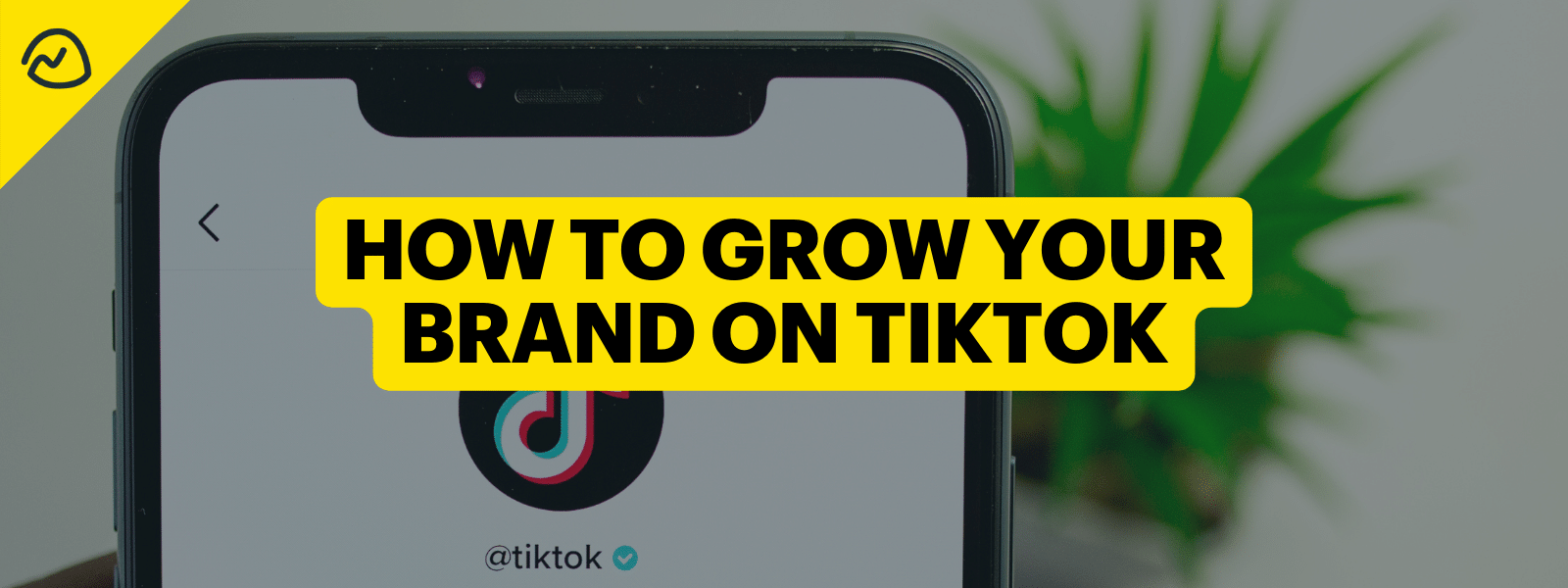We could rattle off a hundred different ways to grow on TikTok. A numbered list teeming with tips, scripts, and video instructions to help you go viral.
Use a ring light.
Look into the camera, not at the screen.
Cut the clips so there are zero pauses—the audience wants fast moving content.
While all true, none of the specifics you see in online videos or other blog posts will help you grow continuously.
Most are tailored to what’s working at this specific moment.
So yes, we could list those trending ideas only for them to be obsolete by the time this post is a few weeks old. But what’s far more valuable is learning how to uncover these trends on your own. Because if you don’t learn TikTok strategy, you don’t have much hope for continuous growth.
Not to mention the fact that your strategy should coincide with the purpose for growing on the app in the first place. Are you an agency with a variety of clients and you need to be able to grow in various ways? Great. Are you an individual freelancing social for a client? Perfect.
Whatever you’re looking to accomplish, it all starts with TikTok fundamentals.
Understanding TikTok’s Algorithm
TikTok’s algorithm is very unique, and is what made the app explode with new creators. Instead of showing you only content from people you’ve decided to follow, the algorithm shows users videos from everyone. Which means a brand-new creator can get thousands—if not millions—of views with their very first video.
And if people like the content? TikTok will continue to show the video to strangers, allowing a single account to amass thousands of followers quickly.
Growing on TikTok means the app has to push your videos. You can’t make content that will be shared via the algorithm if you don’t understand it. Many people talk about algorithms as if they’re a person, and for good reason.
Most social media algorithms are self-learning. They adjust and change depending on what actions users are taking, with a primary goal written in the code: keep users on the app. The way the algorithm knows your videos are doing that is by a few key metrics:
- Length of video watched (including how many times a user has rewatched the video)
- Likes
- Comments
- Shares
- Duets
- Original audio usage (when other creators take your original audio and use it in a new video)
Knowing that these are what the algorithm is looking for will help you create content that triggers one or more of these actions (plus, they’re helpful digital marketing KPIs to track). Keep them in mind when reverse engineering and creating your content types.
Reverse Engineering TikTok Strategy
If there’s one skill to acquire above all others, it’s learning how to reverse engineer something. Knowing how and why something works always gives you a leg up.
The best way to reverse engineer what’ll work for you on TikTok is to consume content in the same industry. Here’s a few steps for getting started:
- Create an account specific to the industry (or client)
- Follow creators who are doing similar work to you/your client
- Engage with their posts (to trigger the algorithm to bring you more content like it)
- Scroll intentionally—take note or study the TikToks with a ton of likes and comments.
- Ask yourself these questions when viewing TikToks:
- What is working?
- What are the comments saying?
- How did the video start?
- What did the caption say?
- Is the caption related to the video?
- What was the text on the video saying that made you watch the full video?
- Test your theories by creating posts similar, but unique to you/your client
Over time, this can become second nature. You’ll open the app and spend time scrolling and notice these elements without much effort. This can inform what content to make and share in any given week. (And if you run an agency, be sure to include this research in your client onboarding process.)
Content Types to Create for TikTok Business Growth
We all know how it feels, sitting around the metaphorical (or literal, if you’re not a remote or hybrid company) table, trying to come up with the next idea for your content calendar. Most people start from scratch, trying to draw up brilliance from the depths of their mind (and muddied coffee).
It’s much easier—and more sustainable—to have a system on rotation to help trigger ideas and force variety.
These content types are the what. The how will be dependent on what works in your industry and what you’ve unearthed by reverse engineering it. You can create a content calendar that rotates through these content types in different ways to ensure you’re hitting the mark for TikTok growth and business growth.
Authoritative
If you’re a brand, agency, small business, or an individual with products or services, you need content that showcases your authority. What makes someone want to pay you?
Nobody cares about what you’re selling. They care about what you know.
Authoritative content can look like:
- Educational content
- How-to style videos
- Tips & tricks
- Hacks
- Did-you-know content
- Dueting other content: take a video someone else posted that relates to what you do and either comment on how it’s right and add on to it, or expose that it’s wrong and explain why
- Reviewing work done in your industry and providing tips to improve
Anything that displays your ability to fulfill the promises of your products or services is authoritative content.
But again, no need to talk about your products. A “my course will help you __” isn’t what will help you grow on TikTok (unless you can do so in an ironic, humorous way).
Branded
Branded content isn’t a video with a certain color palette or font. It’s the stuff that’s unique to you or your client’s business that showcases who is behind the account and what they stand for, either individually or as a business. It’s the behind-the-scenes view of the process, the jokes between staff, the reality of fulfilling whatever they do for their business.
This is less about what you do and more about how you do it.
What are the guiding principles you live by? How can you showcase these in TikTok videos?
Brand-focused videos can be much more flexible in their purpose. You can make them just for fun! The point is to show people what you’re about.
Series
There are two types of series-style videos you can use on TikTok, both meant to keep an audience engaged with your content and following you for more.
Series Type 1: Chapters
We’ve all seen the “Follow for part 2!” TikToks that come across our feed, most often after you’ve already committed to a full minute video, waiting for the big reveal. They do this for a reason, even if it’s sometimes irritating.
They share these videos like chapters, with a larger story encompassing it. Each video serves to share a part of the story or scenario but ends with a cliffhanger. The purpose, like intriguing readers to turn the page and start the next chapter, is to get TikTok users to watch your next video by following, knowing that the algorithm will show them more of that series once they have.
It’s a great strategy that capitalizes on an ancient practice that humans have used for thousands of years and will use for thousands more: storytelling. But you don’t have to just use a story. It works for art, furniture redecorating, sewing, and anything where you start from nothing and show progression. The human brain likes a closed loop, which makes it satisfying to watch progression come to completion.
Hello, dopamine!
Use stories or creations for this series.
Series Type 2: Episodes
The next type is more of similar scenarios, but they’re a complete story in themselves. Creators like Hayley Morris, who has a skit where she plays characters like her brain and stomach, voicing relatable inner monologues we’ve all had before.
Other creators choose a theme and act out various scenarios to reiterate that. Virginia Kerr does this well with her “People’s Pleaser’s Express” series in which she poses the question, “how can I show you how to say no today?” Here, Kerr plays two characters and offers advice to differing scenarios in which a person may have to say no but isn’t great at it.
The idea with episode style series is repeated themes, but complete as individual videos. So followers can be introduced to your account with any of them, and will get more of what they liked with the others.
Relatable
Relatability goes viral on social apps, including TikTok. People are more likely to share and like and comment on videos they personally relate to—especially if it’s something widely felt but hardly spoken of.
This is what brings creators like Hayley Morris to internet fame and has videos about how to peel a banana going viral. People love feeling included, and not alone in their human idiosyncrasies. Plus, it gives them something to identify with.
Coming up with ideas for videos like this can be harder. Some of them land and others fall flat. They’re often best used as tests to see what your audience responds to.
Tests
There is little more important than testing content types. Innovation is created with tests. You can reverse engineer all you want but testing is what allows you to create something brand new that others will be trying to recreate.
We can’t offer advice for this. It’s pure creativity.
What do you want to try? Try it. Don’t worry so much about how it will perform and make what’s fun and on-brand. See what happens. You might just find the new series that’ll explode your account or expose a need your audience has.
Don’t put these off, either. Put tests into your calendar and come up with ideas. Treat them exactly like the other content you schedule.
BONUS: Polarizing content
If you or your client aren’t particularly worried about rocking the boat, this method can work well if done right. Polarization works because it brings in all sides of an argument or debate, which means more people.
It can be anything as mundane as what the best pop tart is, like Joe Santagato and Frank Alvarez debated, amassing millions of views and likes, or something more severe. Just be prepared to hear from the population who disagrees with you.
While risky, polarization can also help attract die-hards who are aligned with your branding.
Growth on TikTok can come on quickly or not at all. The #1 factor in which you’ll experience is consistency. Don’t give up if your videos don’t do as well at first. Learn from them and try again.




